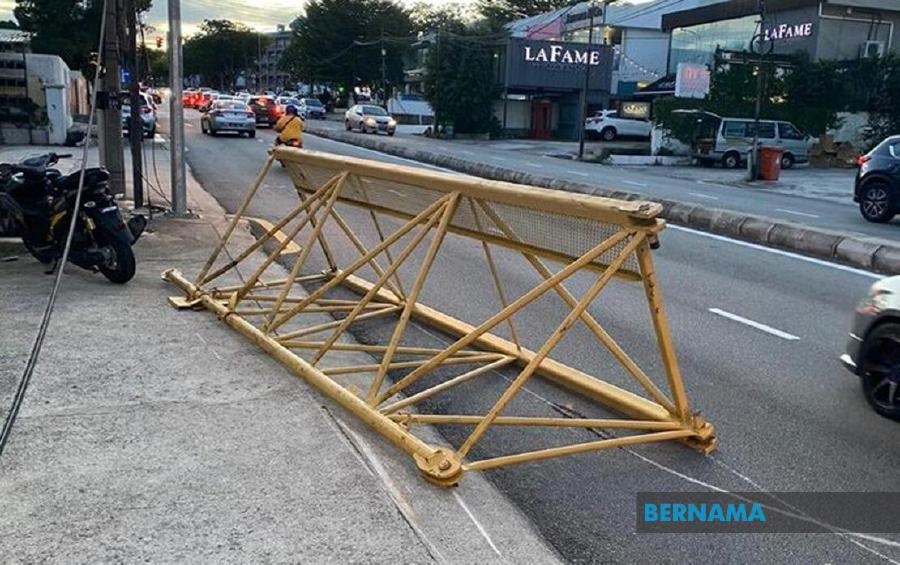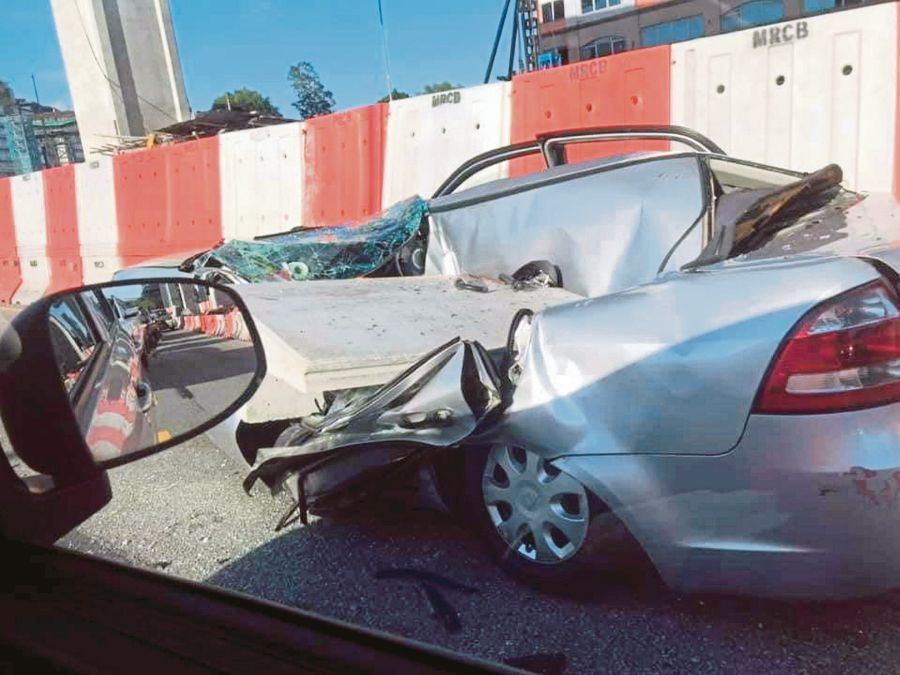You might have read the recent news of two horrifying incidents where construction items appear to be falling out of the sky and landing on vehicles and fortunately, two road users closely avoided death in two separate accidents.

On 19 September 2020, a woman escaped from injury and even death after a portion of a tower crane fell off and landed onto her Perodua Myvi, reported by Bernama.
Taken from: https://www.nst.com.my/news/nation/2020/09/625790/another-freak-road-accident-portion-tower-crane-falls-myvi
And coincidently, at the same time on the same day! A woman was inches away from certain death but instead escaped with just an injured left hand when a concrete slab from the construction of the Sungai Besi-Ulu Klang Elevated Expressway (SUKE) fell and hit her car.
Taken from: https://www.nst.com.my/news/nation/2020/09/625752/woman-cheats-death-after-concrete-slab-falls-car

Fortune is fickle, this kind of accidents could happen to anyone at any time, so you might wonder, in any event that such an unfortunate accident happens to you, how could you take action against the responsible party?
In such event, of course there will be a police interference and investigation on the accident, despite that, the unlucky victims may sue the responsible party, usually the construction company, for negligence to claim for damages (compensation).
Law Governing Tort of Negligence
In order to commence and eventually succeed a negligence claim, the essential elements of negligence should be present and capable of being proved by a plaintiff. The elements of negligence are as follows:-
1. DUTY OF CARE
The test to determine the existence of duty of care between the plaintiff and the defendant is an objective test of the neighborhood principle. The question to be asked is that would a reasonable man who is in the exact circumstances as the defendant foresee that his action will adversely affect the plaintiff. If the answer to this question is a “yes”, then the defendant owes a duty of care to the plaintiff.
For a general example, all road users owe a duty of care to other road users not to do any act or omission which may cause harm and damage to others.
2. BREACH OF DUTY OF CARE
With the duty of care being established, the next step is to determine whether the defendant has breached the said duty of care owed by him to the plaintiff. Generally, this element is determined through the reasonable man test by asking a question whether a reasonable man would have acted the same way as the defendant if he faced the same circumstances as the defendant. If the answer to this question is a “no”, then the Defendant has breached the duty of care.
3. DAMAGES
The plaintiff suffers damages as a result of the breach by the defendant. There are two issues to address here:-
(i) Causation of fact
The court will apply the “but for” test and the question to be asked is “but for” the defendant’s breach of duty of care, would the plaintiff have suffered any injury or damage. If the answer is a “no”, then the defendant’s breach of duty of care caused the plaintiff’s injury or damage.
(ii) Causation of law
A defendant will only be liable for tort of negligence if it is reasonably foreseeable that his action will result in some damage to the plaintiff.
YOU MAY BE INTERESTED TO THIS REAL LIFE STORY IN 18 YEARS AGO!
In 2002, David Chelliah, a journalist was walking under a newly constructed Monorail track. While David was standing under the track, a wheel from a train fell off and hit David, eventually caused him unconsciousness and severe injuries. It was reported that the 14kg wheel caused him to suffer skull fracture in eight places and some physical impairments.
He then filed RM5 million negligence suit in March 2003.
Under the Malaysian law, section 101 of the Evidence Act 1950 imposes the burden of proof for negligence on the shoulder of the plaintiff. Therefore, Mr David bears the burden to prove the elements mentioned above to establish his claim.
However, think about it, was it extremely challenging for Mr David as a journalist, instead of a construction expert, to prove some certain ingredients such as which act exactly caused his injury? For example, Mr David would need to prove whether it was the failure to tighten the wheel, or a negligence in placing the wheel, or a bad quality of the material etc.
In this case, the court applied a special rule of evidence, Res ipsa loquitur (the fact speaks for itself) where the cause of accident is not known and the manner in which the accident happened itself, suggests the inference that the defendant was negligent. So now, instead of Mr David proving that the defendant was negligent, the defendant now had to prove that they were not negligent.
The judge, while making the final decision, said that it was rare for a train wheel to fell off and hit someone. If it did happen, it could be said that it was caused by the negligence of the monorail company, even though the exact act of negligence could not be exactly identified. Besides, the defendants could not prove that they had been careful enough.
Finally, the defendants, Monorail Malaysia Technology Sdn Bhd and KL Monorail Systems Sdn Bhd were found liable by the Kuala Lumpur High Court.
Examples of Other Torts
|
Examples |
Definition |
|
Road accident |
Any accident involving at least one road vehicle, occurring on a road open to public circulation, and in which at least one person suffers loss, injured, or killed. |
|
Personal injury |
An injury that causes physical and emotional harm. |
|
False imprisonment |
Occurs when a person intentionally restricts another person’s movement within any area without legal authority or justification. |
|
Medical negligence |
Any negligent, improper or unskilled treatment of a patient by a health care professional. |
|
Vicarious liability |
Liability for an injury to a person who did not cause the injury but who has a particular legal relationship to the person who did the negligent act. |
|
Occupiers liability |
Liability owed by occupier of land or premise towards visitors, whether invited or uninvited, whose presence is lawful or unlawful. |
|
Trespass to person such as assault, battery |
A direct or an intentional interference with a person’s body or liberty. |
|
Trespass to land |
Occurs where a person directly enters upon another’s land without permission, or remains upon the land, or places any object upon the land. |
|
Nuisance |
An act which is harmful, inconvenient or offensive to the public or a member of public. |
|
Breach of statutory duty |
An act which breaches the duty under the law. |
For other information, please click and visit: http://www.yeepartners.com.my
Disclaimer:
The information published in this article is provided for general informational purposes only and does not constitute any legal advice from the Yee & Partners. Feel free to seek legal advice from our professional lawyers.